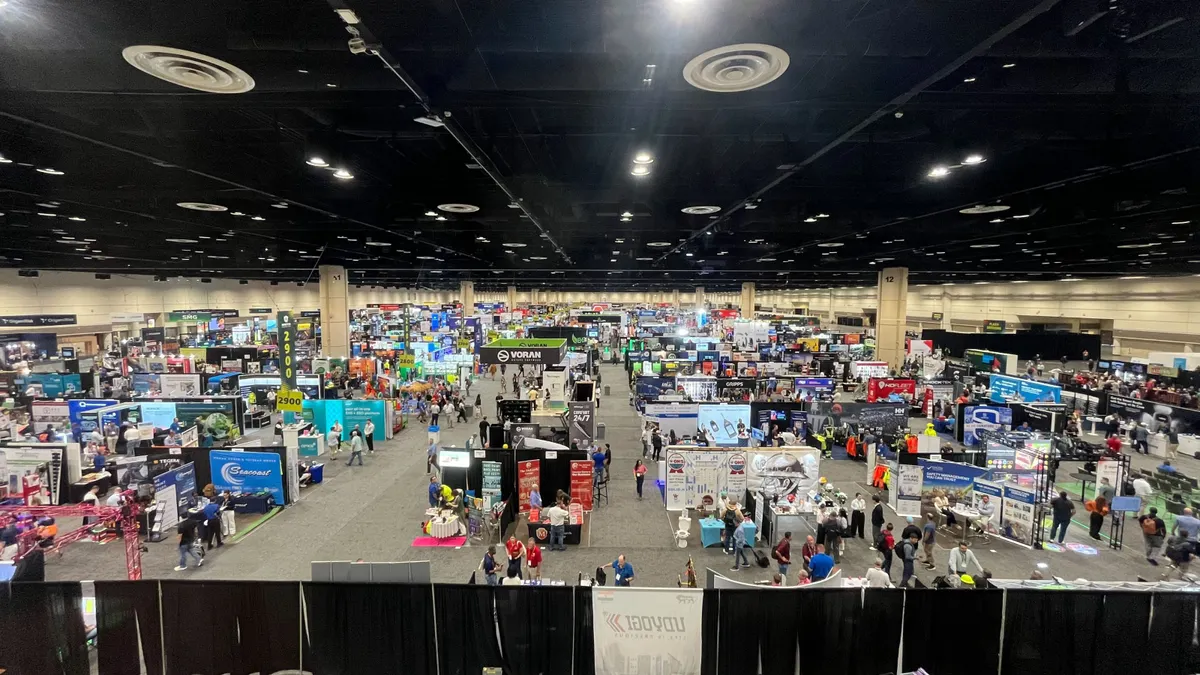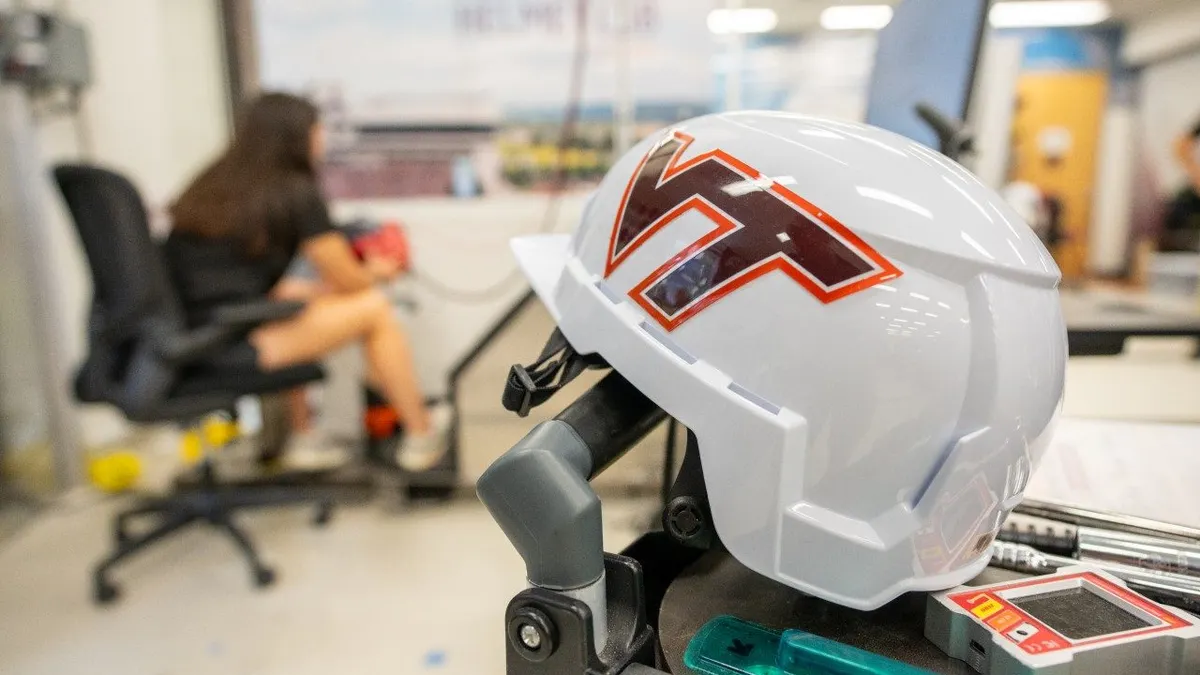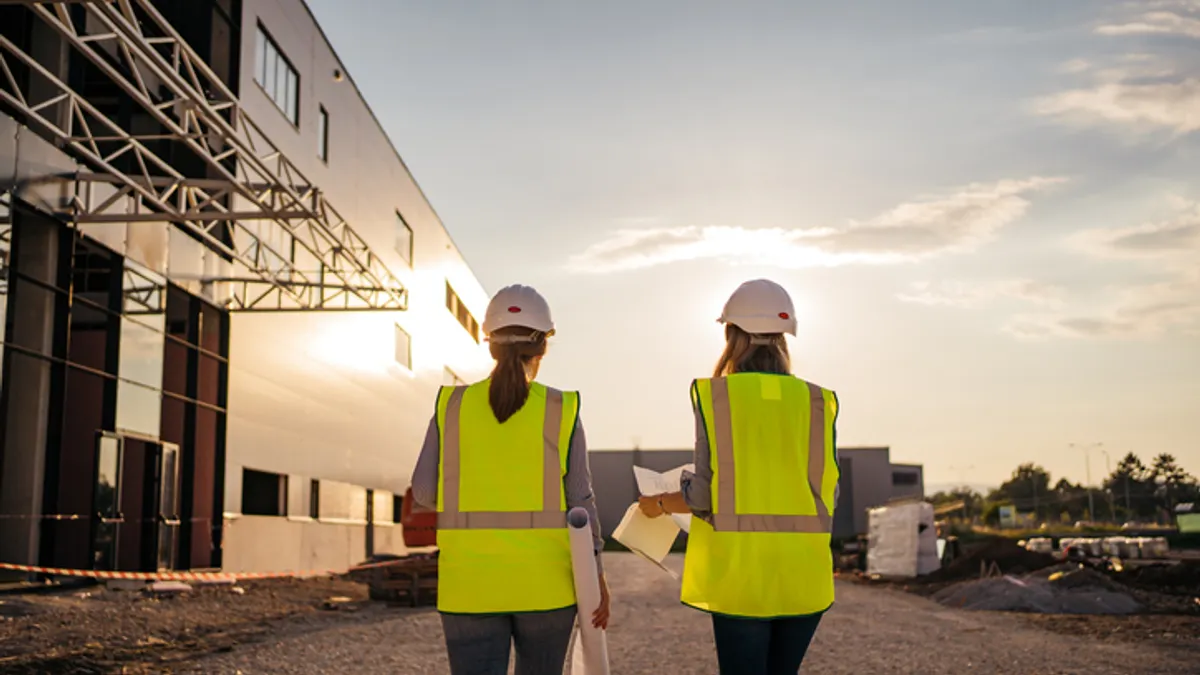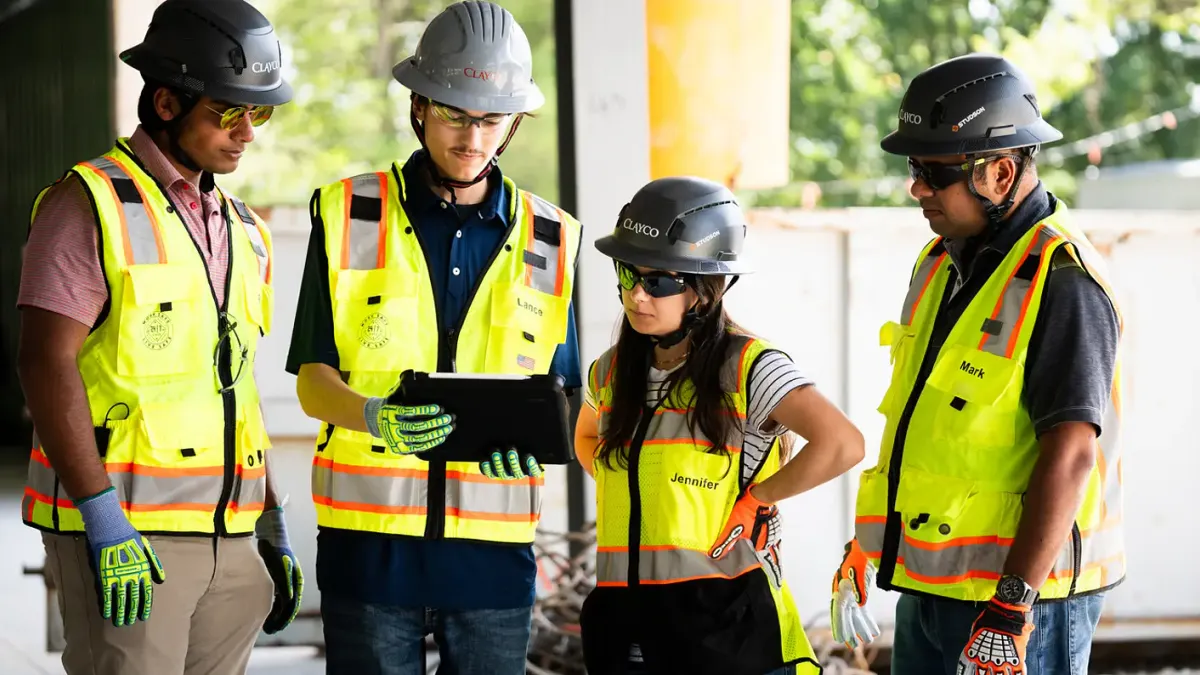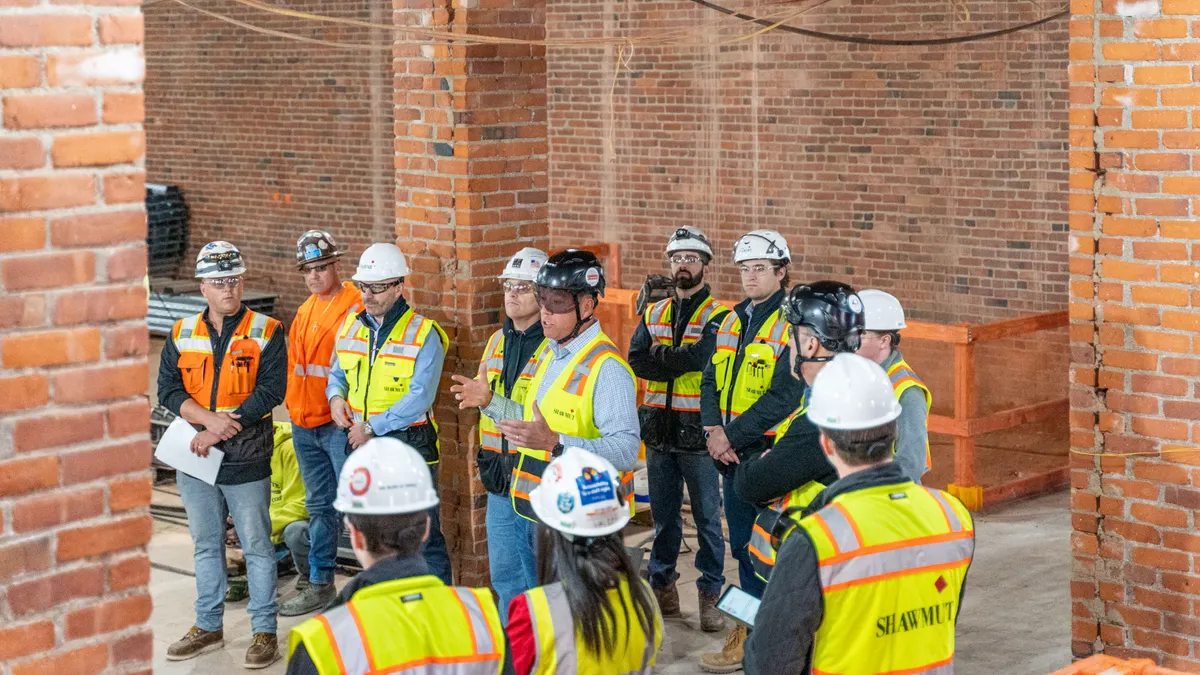ORLANDO, Fla. — The expo hall at the American Society of Safety Professionals 2025 conference in Orlando, Florida, last week was full of colorful booths, towering product showcases and even a musician strumming a guitar while donning flexible work gloves.
The annual conference draws attendees from all industries, but many of the items shown there have applications for the jobsite. Here are a few of the most eye-catching:
SpanSet’s Auxivo OmniSuit

In the past, Sanford, North Carolina-based SpanSet has mostly sold fall protection and cargo control, but in the last two years, it has also retailed exoskeletons, said Evan Vogel, sales director.
At the SpanSet booth, visitors could try on the OmniSuit, a strappy exoskeleton designed to assist workers performing above-shoulder work, and demonstrate a use-case by holding a drill above their head and bending to lift a box. The suit itself weighs about 6 pounds, and straps around the waist and thighs. Supportive rests buttress under the arms.
Auxivo’s exo-suits rely on textiles for support, meaning the way they are tightened focuses on supporting a user lifting rather than applying another more advanced (and potentially heavier) tech, Vogel said. For example, bending to lift guides the wearer to squat and lift properly by tightening the material at the lower back, making it harder to lean forward.
Applications for the suit include manufacturing and logistics, and Vogel said construction trades, such as drywall installers, could benefit from the suit’s design. Currently, the exoskeleton has largely been embraced in Europe, but Vogel said that its popularity is growing in the U.S.
SureWerx Fall Safe harness
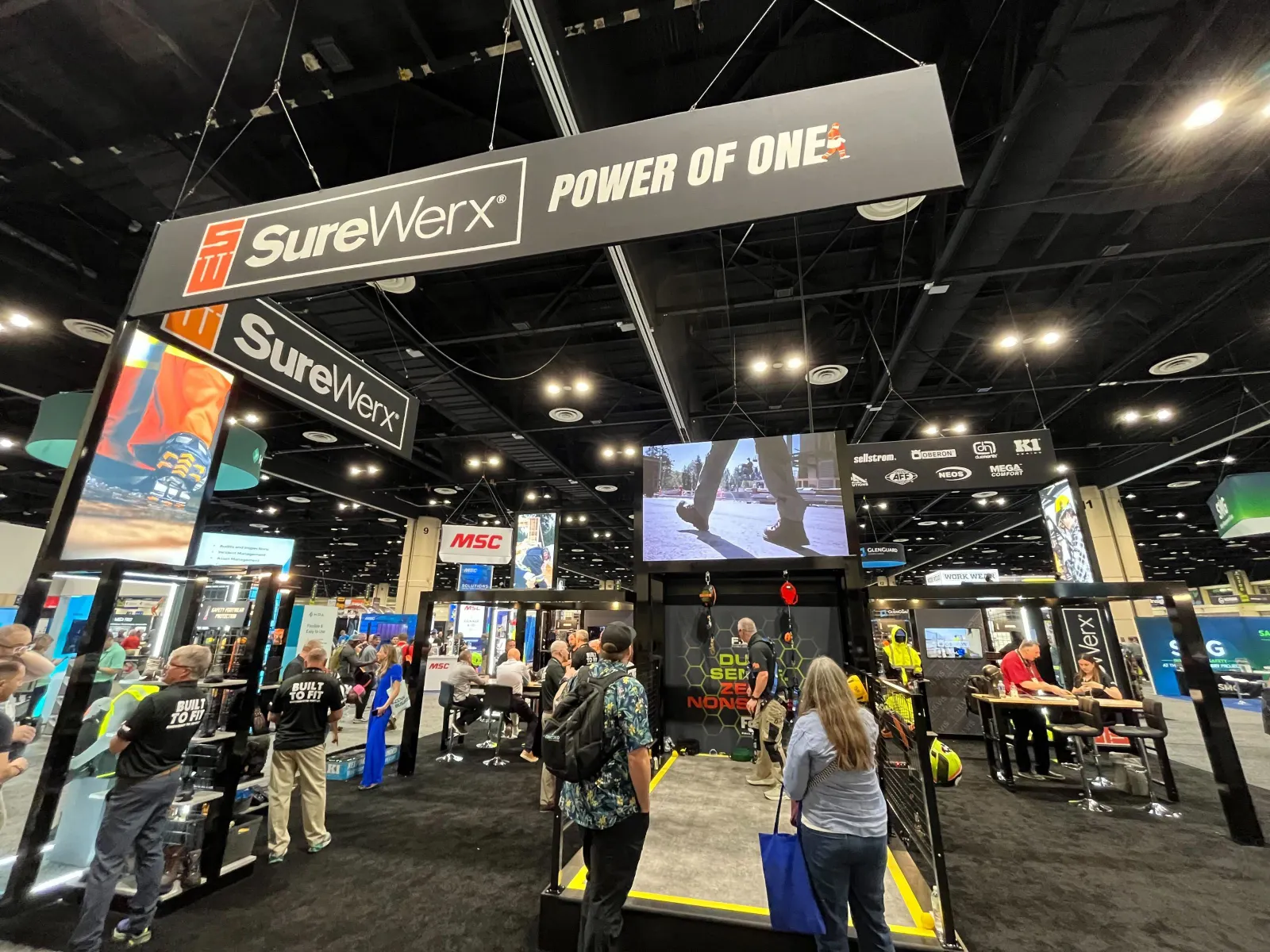
At a large booth with a small runway, Elgin, Illinois-based SureWerx’s Fall Safe, a new fall harness, made its North America debut. Demonstrators walked quickly down the runway to demonstrate that the new protective equipment doesn’t lock up improperly due to jerky movement.
The gear is designed to protect workers by measuring for both velocity and acceleration, said Dustin Schneider, strategic account executive for North America. Traditional fall safety measures only velocity, stopping or locking at higher speeds, which can lead to irritating or painful strain when a worker bends to pick something up, according to the firm. It can also result in workers holding the line slack and dragging it along with them.
SureWerx gear measures for when there’s a change in speed, locking hard when the line rapidly accelerates. The result, Schneider said, allows workers to move or walk quickly or bend without having to worry about the harness erroneously locking up.
The new harness will begin retailing in the U.S. by the end of the year, Schneider said.
Epicore Biosystems hydration wearable
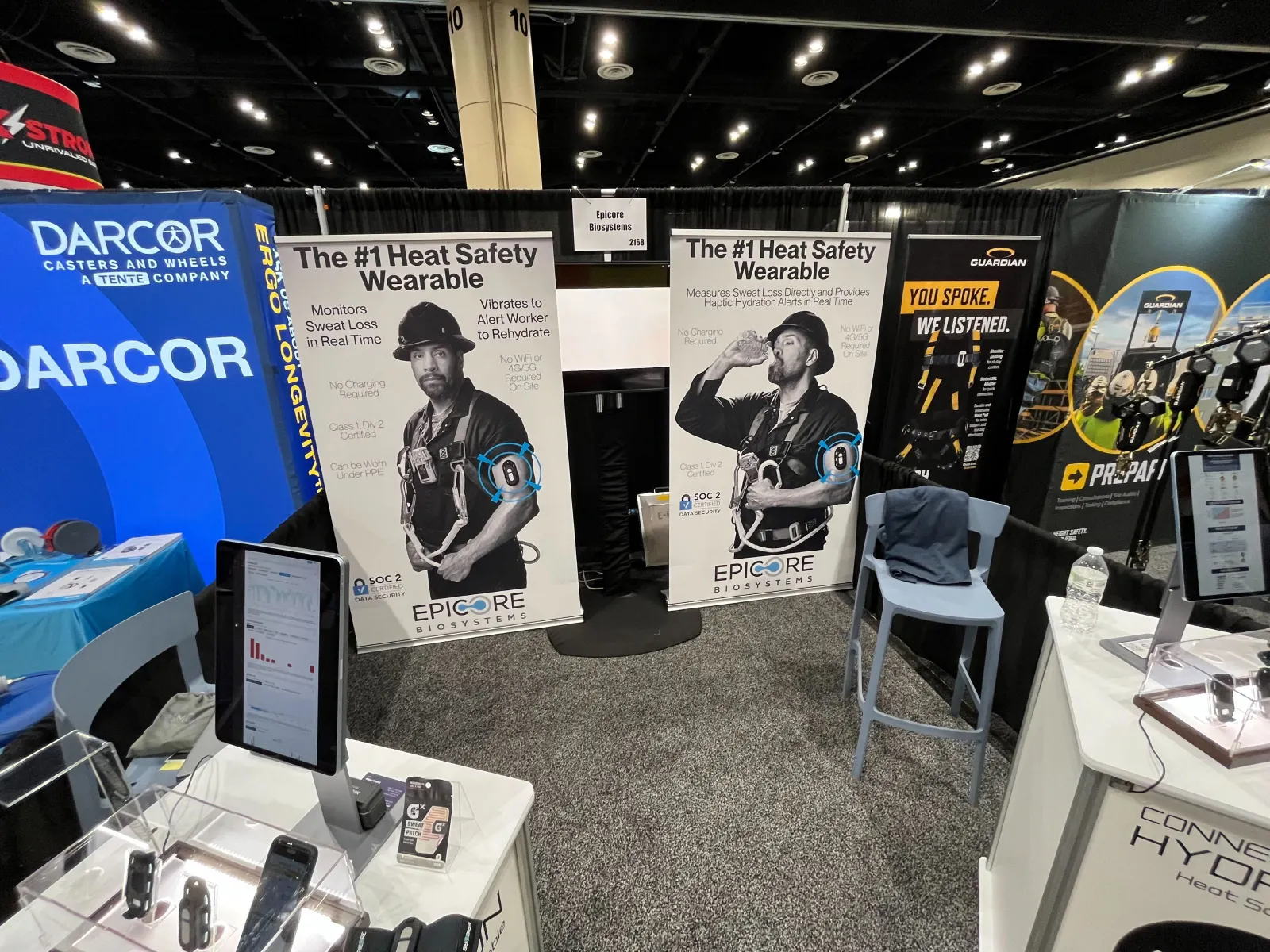
Cambridge, Massachusetts-based Epicore Biosystems displayed a hydration-detection wearable. Though some versions of the product adhere to skin, construction workers found it easier to put on and take off the wearable via a strap around the bicep, said Navroop Sidhu, director of growth marketing.
The device is able to measure when the user has lost about 500 milliliters of water, or about one water bottle’s worth. At that point, it begins buzzing, alerting the wearer they need to take a break and hydrate. Once they do, the wearer can press a button to indicate to the device they have consumed water. If they don’t, the device will continue buzzing as the situation becomes more dire.
Epicore Biosystems began by marketing a Gatorade patch measuring hydration for athletes, but Sidhu said that the applications of the hydration tracker have expanded to industries in which workers spend prolonged hours in the heat, like construction.
Caco America’s cool helmet
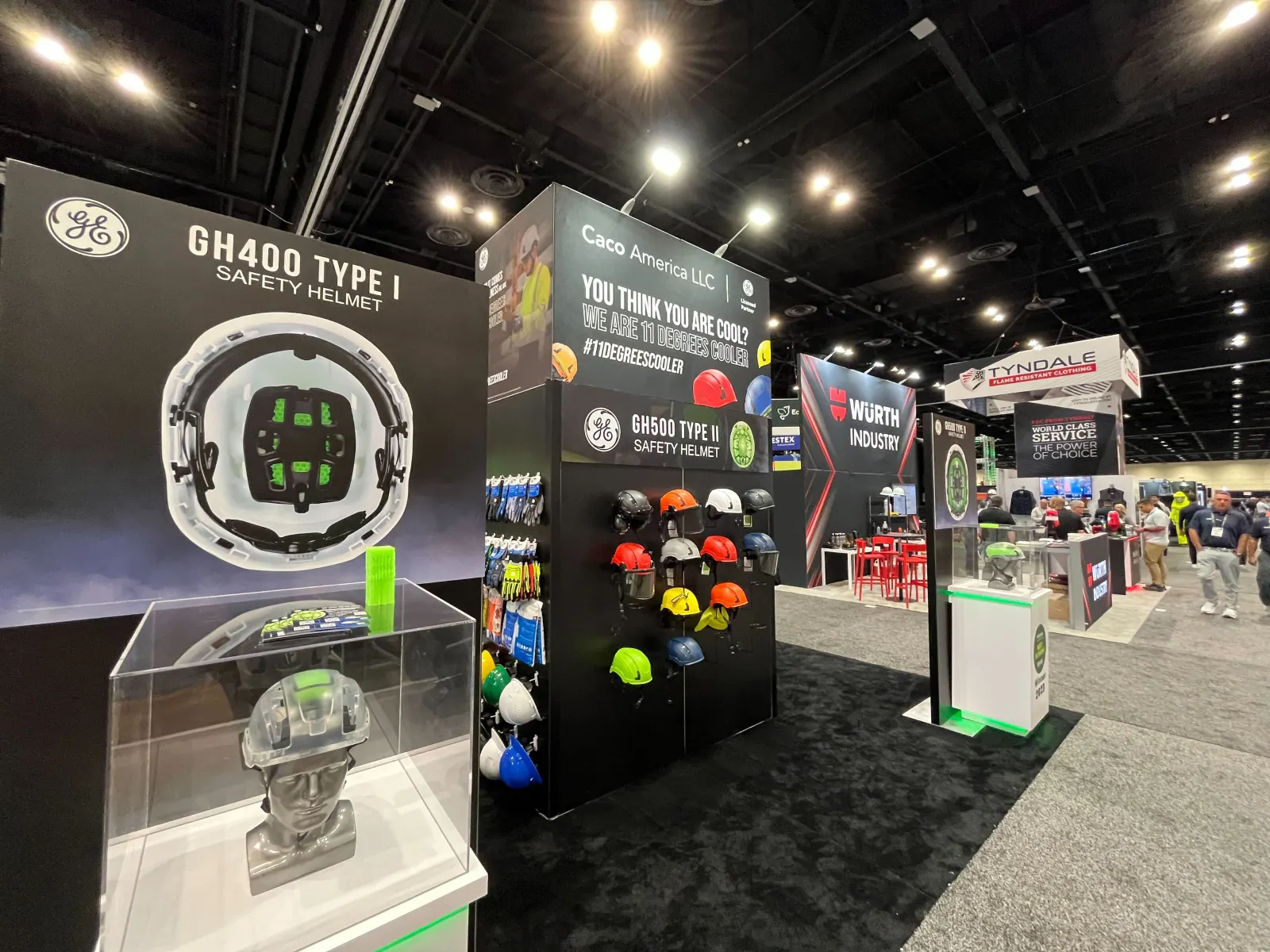
Caco America showcased helmets aimed at protecting workers’ heads from strikes as well as heat. The U.S. arm of the Panama-based equipment manufacturer Caco Abbo has released the GH400 and GH500 helmets, which have won recognition for their use of Koroyd patented technology originally created for aerospace safety research.
Green cylindrical tubing absorbs the impact of blunt trauma to the type 1 and type 2 helmets, said James Rogers, national sales director for the firm, but also takes up less space within the helmet than traditional EPS foam used by many other brands. As a result, the helmet is made of about 95% air, making it lightweight. That also means it doesn’t increase head temperature as intensely as other equipment, Rogers said.
In 2022, the GH400 helmet won second place in the Best in Show Competition at the National Safety Council Safety Congress & Expo in San Diego.
Paragon cooling vest

Paragon Pro uses ice or ice packs stored within coolers to pump cool water through wearable gear and keep worker body temperatures low. Packs vary in size from small hip coolers with about 45 minutes to an hour of use, to massive coolers designed for multiple workers to use at once on a break.
For those not actively moving around, the rapid cooling will quickly begin to take effect.
“If you run it for 10 minutes, you’re going to want to take it off,” said Clarence Patten IV, president of Paragon Pro.
Currently, the product is used largely for motor sports, surgeons who need to remain cool under hot lights for long procedures and actors in heavy costumes. But Patten sees more applications, and not just for workers on break in need of rapid cooling.
For example, Patten said the suit could benefit workers who are outside for prolonged periods in hot weather, such as line workers in aerial lifts and support crew below.
Correction: This story has been updated with the correct spelling of Navroop Sidhu’s name and to provide more detail on Epicore Biosystems' wearables.



